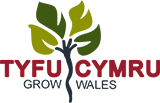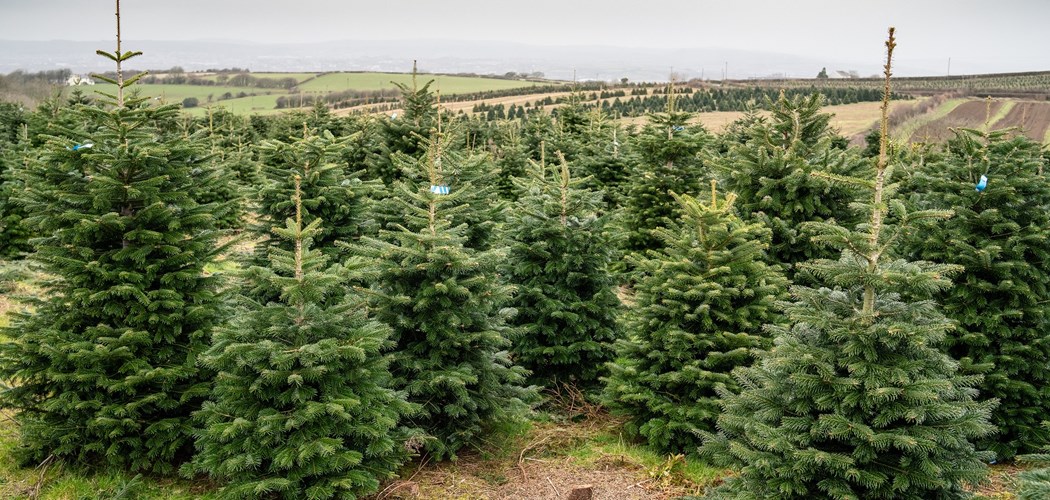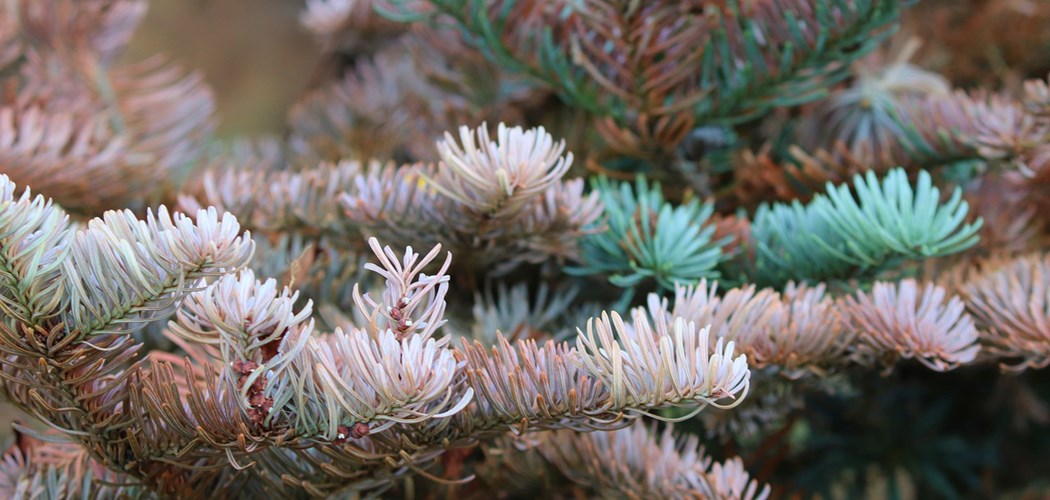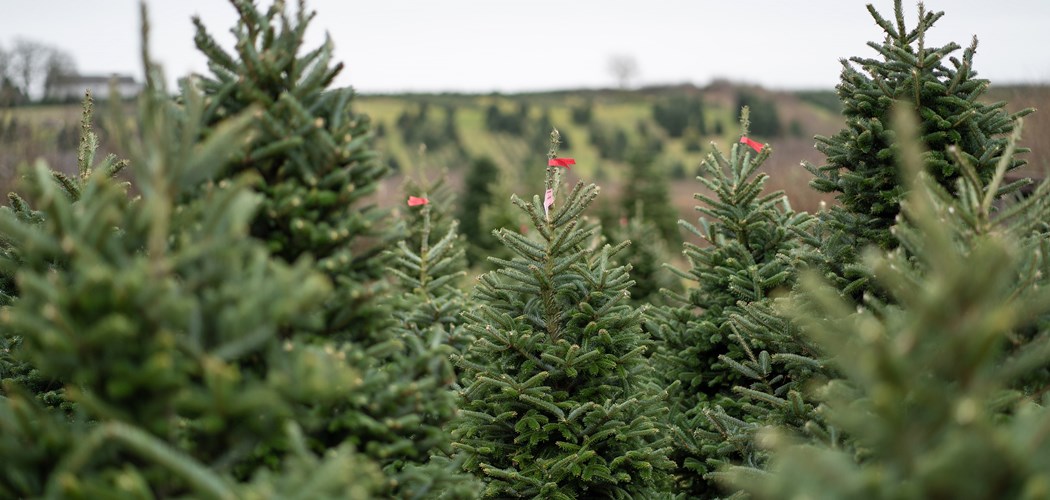Christmas Tree Network Study Visit: Technical Pruning Notes

Download the Toolkit: Christmas Tree Management Santa Fir Study Trip.pdf
Timings of pruning can vary between tree types. For Nordmann Fir pruning should be made in spring or summer as sap flow will be sufficient to help the trees recover, whilst Spruce should be cut in the autumn or winter. It is best practice to aim to only prune a tree once in its lifetime, and careful planning can avoid the duplication of labor over multiple years. Trees should always be pruned or sheared in dry and preferably warm weather.
Leader Management
The best upper tree shape can be achieved by ensuring a single leader shoot is surrounded by a top whorl of three or four side shoots at equal angles. In young trees later growth will be sufficient to fill out the canopy evenly, whilst in older trees nearing harvest an even distribution will best match customer expectations. If the leader is short and undeveloped with few buds, it is best to be pruned out and allow internode elongation to produce a new leader layer.
Basic Branch Spacing & Angling
This can most easily be achieved by the use of rigid plastic branch spacers used in combination with hand sheering. You should aim to have four even shoots in the top whorl or crown, with lower branches cut and shaped similarly. After pruning, remaining branches can be adjusted to a suitable angle and left to stiffen with subsequent growth. The plastic spacers should be removed at harvest and can be reused in newer plantations.
Tall Leader Shoot
In instances where long leader shoots project high above the tree canopy, longer lower branches can be used to improve the structure. Here, one or two side shoots in the top whorl of a tree can be brought up to the vertical and fixed to the leader with a tie towards the lower end of the shoot. Over time the vertical branches will curve over to the horizontal creating a new branch layer. When selecting long shoots for this shaping it is important to select either three or four horizontal shoots which can be brought up to give even angles at the next layer.
Missing Leaders
If a leader is damager, bent or missing, it can be possible to replace this with a horizontal branch taken from a lower canopy layer (most usually the top whorl of shoots of the tree). It is necessary to choose a long shoot with good bud development that can be turned into a new leader, but without upsetting the symmetry of the lower branch layer. This can then be bent upwards and secured to a stake which is also tied to the upper branch for support. Fixing the new leader along its length (unlike just the base as described above) will cause it to remain vertical when maturing.
A common cause of leader damage or bending are birds (especially owls) alighting on the leader whilst flying over the plantation. This can be discouraged by securing tall old trunks with a few remaining upper branches in the plantation to provide perching posts to discourage the use of the growing plantation.
Tree Shearing
General tree shaping should be achieved through careful hand pruning over the course of the plantation’s lifecycle. However, it may be necessary to carry out heavy shearing close to harvest to achieve target tree shape. In this instance a 60° angle across the upper portion of the tree should be achieved with even layering. This can be achieved through the use of custom-build shears suspended on a harness above a crop worker than can be held at a fixed angle as the worker works in a circle around the tree. This will achieve an even tree shape and can allow many trees to be quickly sheared but should be done well in advance of harvest to allow cut ends to dry and seal. All equipment used for pruning and shearing trees (and most especially for mechanical shearing) must meet the required Health & Safety standards. Staff using this equipment should be appropriately trained so as to be able to use it safely and be supplied with & wear any necessary protective clothing.
To download the toolkit which includes visuals please click here: Christmas Tree Network Study Visit: Technical Pruning Notes
Related Pages
Technical Advice Sheet: Christmas Tree Needle Diseases
A range of similar, but subtly different, foliar diseases can impact Christmas tree plantations. Careful management of both the crop and growing area can be useful in controlling risk factors.
8/2/2021 11:39:28 AMWebinar: Christmas Trees - Summer Update (Current Disease issues)
In this Session Janet Allen (ADAS) focused on current disease issues in Christmas trees. Particularly looking at current season necrosis, fire weed rust and Rhizosphaera needle cast, alongside some specific weed and pest control issues.
6/18/2021 3:21:40 PMPests and Disease: Threats, Diagnosis and Reporting
It is essential that pests and diseases are identified correctly before they can be controlled efficiently and their spread prevented. In this presentation Dr Ana Perez-Sierra, Head of Tree Health Diagnostic and Advisory Service will describe the pro…
11/26/2020 2:07:16 PMTechnical Advice Sheet: Christmas Tree – July
This fact sheet provides technical advice on managing Christmas Tree crops
8/25/2020 3:41:17 PM


